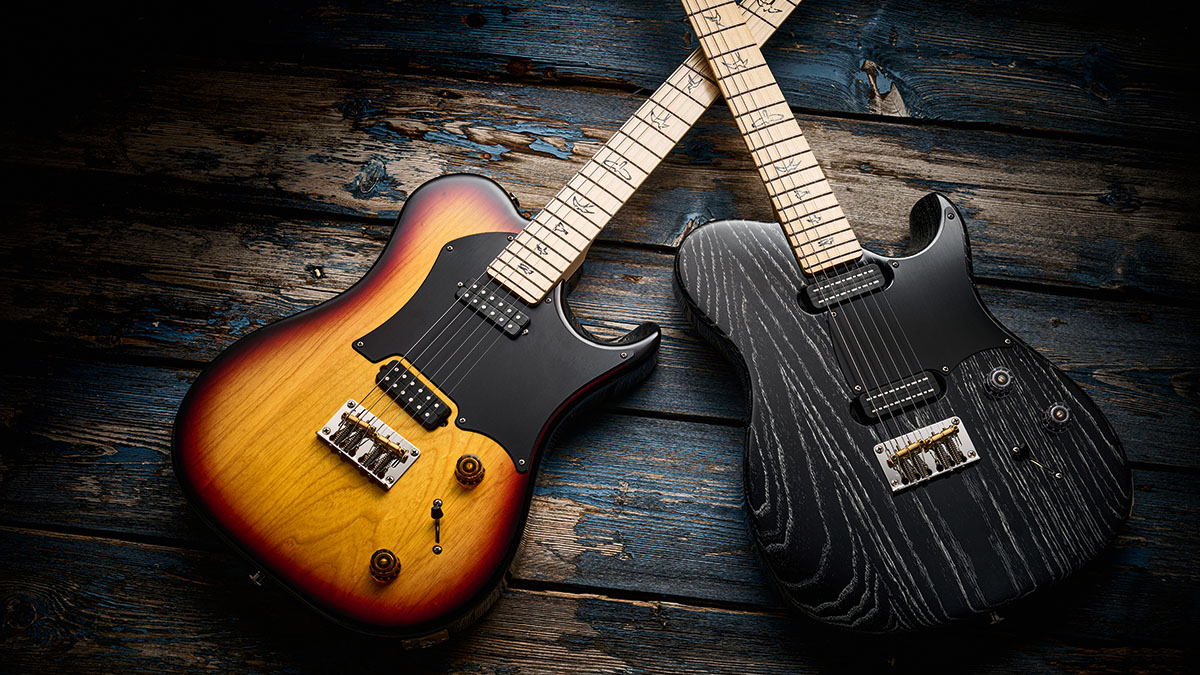Guitar World Verdict
No-one’s hiding the inspiration here, but that’s really all it is – and these guitars look, feel and sound a lot less derivative than the Silver Sky. Above all, both bring another ‘single coil’ flavour to PRS’s quality menu, a bit of blue-collar to balance the bling.
Pros
- +
Light weight.
- +
Neck shape.
- +
Playability.
- +
Hot vintage voicing.
- +
Very usable humbucking sounds.
- +
NF 53 has simple palette of single-coil-like humbucking sounds.
Cons
- -
Visually, the bridge pickup’s polepieces seem too narrow.
- -
The two-saddle bridge is a marginal compromise in terms of intonation.
You can trust Guitar World
The majority of signature guitars are based on an existing model and then pimped up a bit to suit the artist. Mark Tremonti’s PRS signature, for example, is based on the PRS Singlecut, Dave Grissom’s signature on the PRS McCarty. But in recent years PRS has changed tack a little.
John Mayer’s Silver Sky might have heavily borrowed from the style of the Stratocaster, but in PRS’s catalogue it was a new design; Mark Lettieri’s HSS Fiore was another, albeit with less specific inspiration.
Long-time PRS user Myles Kennedy started a bit of an internet rumpus back in 2022 by showing off a custom-made PRS on stage. Its single-cut slab body with two pickups had the internet calling it a PRS ‘Telecaster’. All PRS itself would tell us was that “like many artist guitars, it is simply a custom build that we did for Myles to fulfil some of his needs on this tour and in support of his latest solo album”, The Ides Of March.
Pretty much a year on since those rumours started, that ‘custom build’ is now being released as the Myles Kennedy: a completely new signature model in PRS’s Bolt-On range.
The bigger surprise, however, is that there’s another model with a single-cut slab body and two pickups being released at the same time: the NF 53, a guitar “inspired by one of Paul Reed Smith’s vintage guitars from 1953”, we’re told.
So, if the inspiration for both guitars is pretty clear, the oddity here is that we have a signature version of a guitar that doesn’t exist and a new standard model, released simultaneously, that’s significantly different.
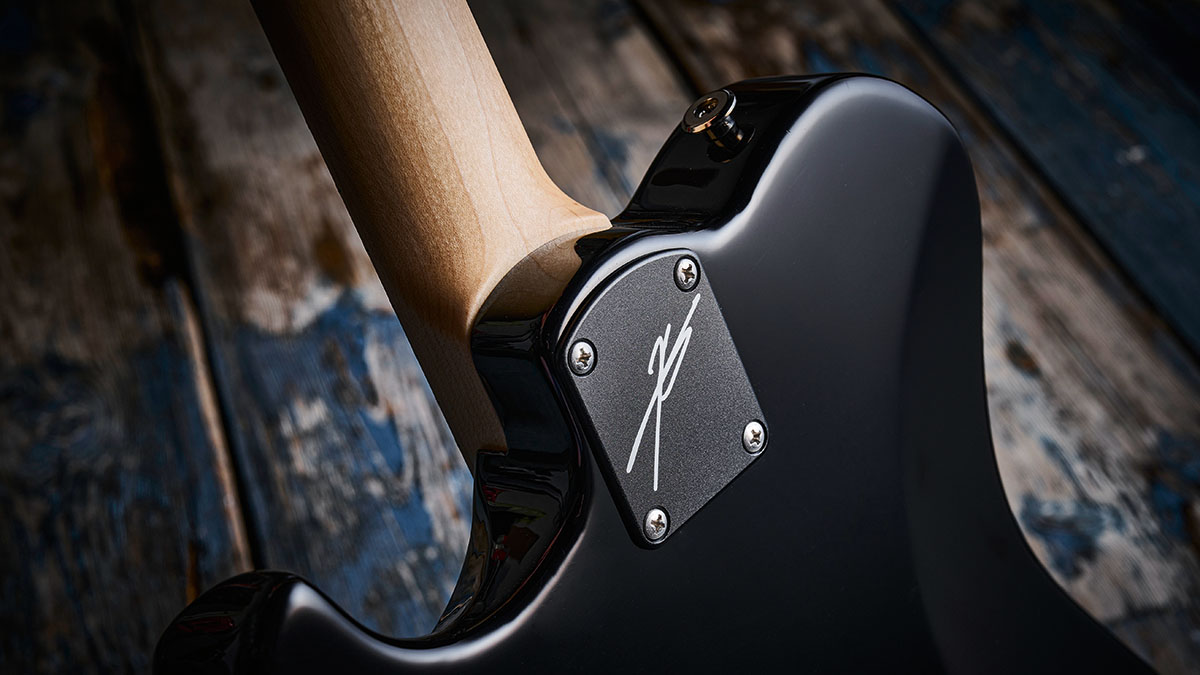
Taking shape
Let’s start with the shapes. Drawing around our ’69 Tele reference and then the MK, the outlines are actually more similar than they look. The MK’s upper shoulder is a little more rounded, like the end of the heel; the treble cutaway is less deep but widened, and the horn is much more PRS-like and, of course, we get the hallmark scoop.
The NF 53’s outline is a little different again: its shoulder appears slightly pulled out, but there’s actually more incurve as it moves into the heel, which is shorter, and of the three it has the deepest cutaway, again with that PRS-like horn and scoop. The waist and the base on the bass side are slightly offset, too.
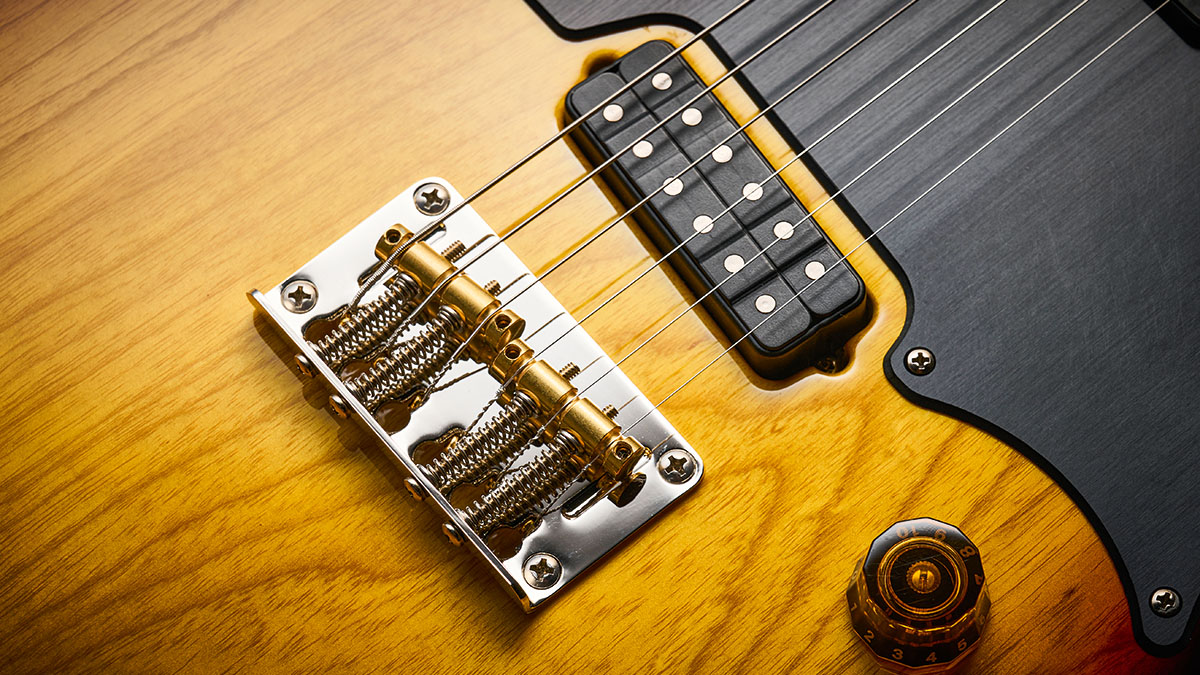
Both use swamp ash for the body wood, with a classic thickness of 45mm. Through the Tri-Colour Sunburst face of the MK (the sides and back are opaque black), it initially looks like it’s one-piece.
However, with the overall Black Dog Hair gloss finish of the NF 53, you can clearly see its three-piece construction on the base edge and (possibly annoying for some) in the treble cutaway. The edge radius is more Strat-like than the tighter radius of the Tele and seems the same on both bodies. Each model has slight forearm and rib-cut contours but neither are as deeply shaped as the Silver Sky.
The scratchplate creates its own lines and the NF 53’s is a little more Tele-styled; the MK’s almost nods to a bat-wing Gibson SG ’plate that’s been user-modded. Both appear to be made of the same single-ply ABS material, though the MK’s edges are chamfered; on the NF 53, the edges are left square and a little sharp.
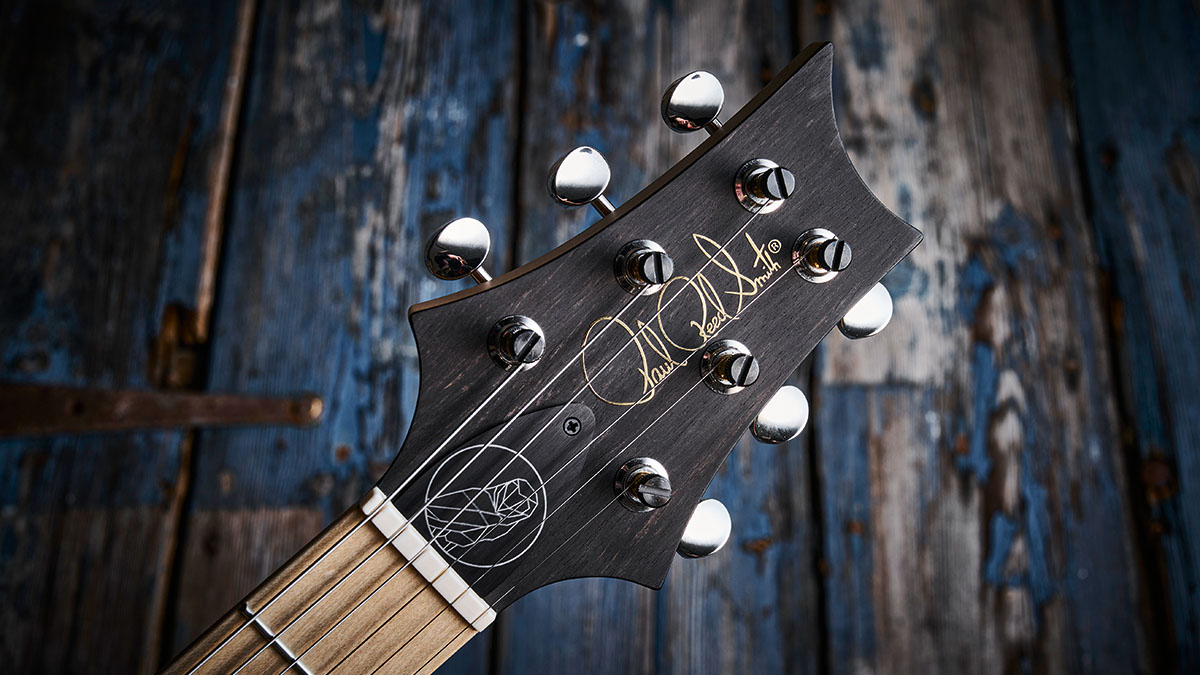
The slab-sawn maple necks are certainly more similar, modern PRS Bolt-On in style and with the same smaller-outline black birds, which already featured on the Silver Sky Maple, the Fiore and the Dustie Waring CE 24 Hardtail Limited Edition. There’s also the usual scarf-jointed headstock. That said, the MK’s headstock is faced with ebony and there’s a ‘geometric’ owl logo from his Ides Of March solo album on the truss rod cover.
The NF 53’s headstock is unfaced with just the model name on its truss rod cover. The fingerboard radius on both is classic PRS, measuring 254mm (10 inches), and the fretwire seems the same. There’s no tint to the natural neck finish, but the MK’s finish is all satin; the NF 53’s face is satin, but the back is gloss. Then, of course, just to add to the choice, the actual body finishes differ – the MK has five options, the NF 53 just four.
Parts & pickups
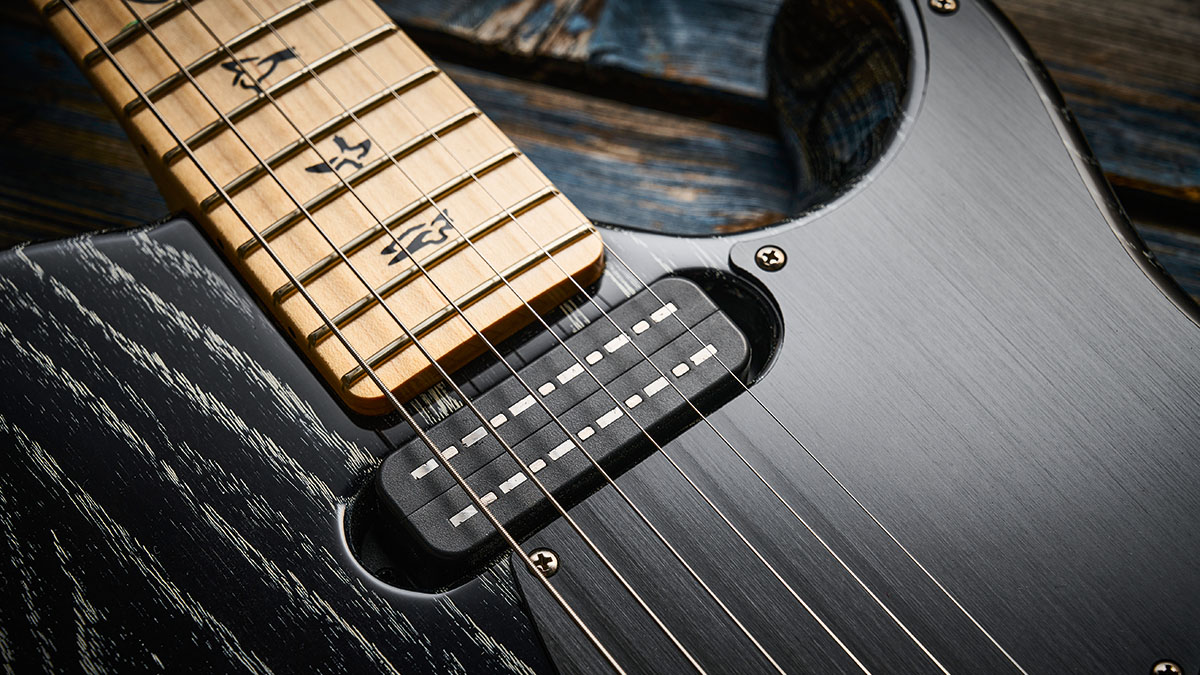
Even the tuner choice differs, with the MK going for a set of PRS-designed, nickel-plated, vintage-style locking tuners. The NF 53’s are like those on the Silver Sky, non-locking with larger plastic buttons, although these buttons don’t seem as wide across and they’re a polished ivory material.
One thing that moves both of these new designs away from their initial inspiration are the bridges, which are the same on both. If you’ve played or owned a PRS Vela, you’ll recognise the design: “This bridge harkens back to Paul’s early designs and traditional baseplate-style bridges,” states PRS, “but is top-loading for easy restringing.” These both use a steel baseplate with small keyholes to allow you to anchor the strings behind the two brass saddles, just under 8mm in diameter, each with overall height adjustment and dual screws to set the position and intonation.
The pickups and controls add to the list of differences. The MK uses a pair of small-aperture PRS Narrowfield humbuckers, and the bridge is slightly angled to enhance the treble response. Both have the same narrow polepiece spacing of approximately 49mm, and while the neck’s poles sit nicely under the strings, they certainly don’t on the bridge pickup, not least with the 54.5mm string spacing at the bridge plus that slant.
The NF 53’s Narrowfield DD (as in ‘Deep Dish’, an early PRS humbucker) pickups are a very new design and “are made with taller bobbins to fit more winds and extra metal pieces in between the magnets for a more focused, powerful tone”, says PRS. They’re also narrow aperture humbuckers and both mount directly to the body – the same as the MK’s bridge pickup, though its neck pickup is suspended from the scratchplate.
The bridge pickup is where the MK begins to take off: we’re hearing almost Les Paul Junior-type heft
Thankfully, neither guitar uses a distinctive Tele-style control plate: the controls are all rear-mounted. The MK places the master volume and tone in a straight line parallel to the strings, with the angled five-way pickup selector in between. As you can see, the NF 53 goes for a more PRS-like layout where the dual controls are angled, the same as the lower-placed level switch, which is just a three-way this time.
There are no tricks on the NF 53, then, just each individual pickup or both-on together. The MK is more complex with those same three sounds, but in position 2 on the five-way switch we get the full bridge humbucker with the neck-facing single coil of the neck humbucker, in parallel.
In position 4, both pickups are split, voicing the outer single coils of each, and combined in parallel. Finally, a pull-switch on the tone control introduces a preset tone roll-off on the bridge pickup only, which affects positions 1 to 4 on the five-way selector.
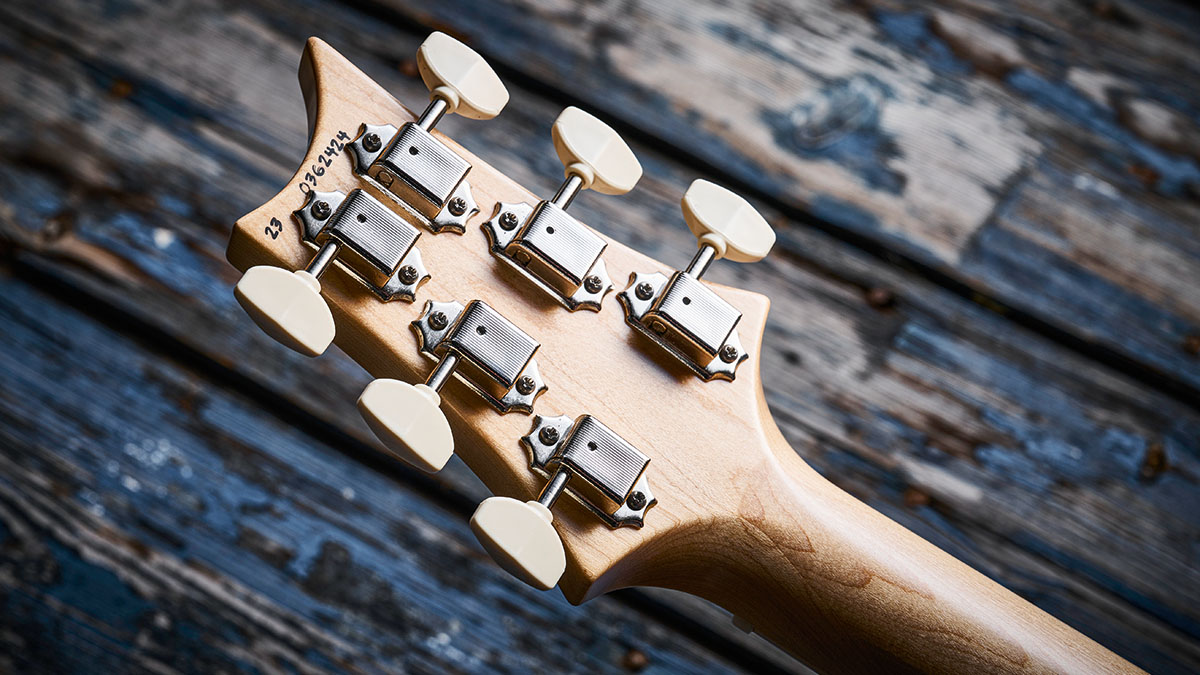
Feel & Sounds
Starting with the MK, pulling it from its gigbag we nearly launched the guitar across the room! It is super lightweight at just 2.81kg (6.2lb) and the only solidbody guitar of a similar weight from PRS that we can remember was the obeche-bodied Mira-X, which weighed in at 2.6kg (5.75lb). Unplugged, there’s quite a pushy, fast response that’s less steely sounding than a new CE 24 we had for comparison – it’s subtly different.
Running through the sounds plugged in, however, and while it’s clear what the original inspiration might have been, does it really sound Tele-like? There’s a little of that in the high-end response, certainly on the bridge pickup, but it’s a fuller, less thin sound and it really does sit between our ’69 Tele and that new CE 24.
A T-style with more girth? The neck pickup is similar, a wonderful depth with single-coil snap that – with a little hair – begins to remind this writer of a good Les Paul Deluxe: clear but smooth.
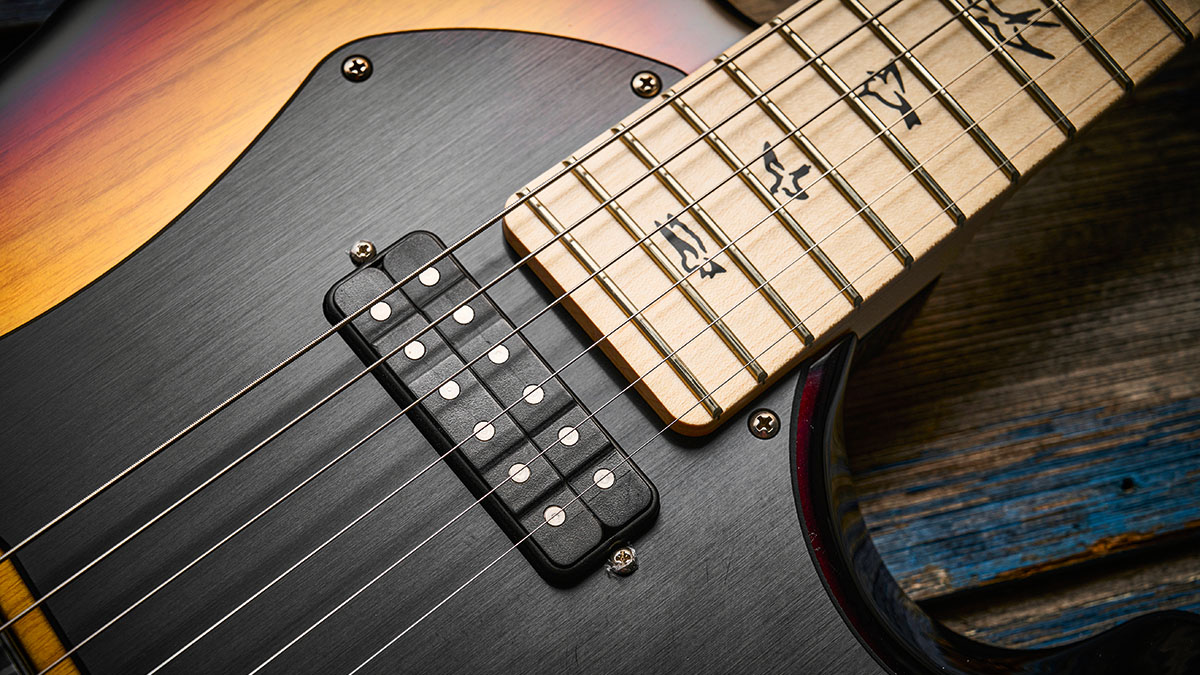
Back to the bridge and that Tele-like honk and bark is present, just without the shrill high-end, and this is where the MK begins to take off: that depth really suits some crunch and we’re hearing almost Les Paul Junior-type heft without the noise.
Positions 2 and 4 on the five-way add a little more ‘Strat’ to the proceedings, they’re a little thin-sounding perhaps, but they don’t detract from the palette, while the centre both-on position is ballsy Keef, the parallel link retaining the clear high-end with some of that bark and depth. It’s a big rootsy rhythm sound, for sure.
That pull-switch preset tone roll-off is subtle, pulling down the high peak as if you’re using a long lead, something that players using the guitar wide open on a big stage might find useful.
The NF 53 is another lightweight guitar, slightly heavier than the MK at 2.97kg (6.54lb), and plugged in we have another flavour: it has less of the MK’s girth and produces what most of us would call a more ‘Tele-accurate’ Fender-esque voice. It’s a lighter take, but without the toupée-raising high-end, which sounds almost studio-sweetened as is so typical of modern PRS guitars.
While the bridge seems to pull back the peaky honk of the classic Tele slightly, the neck sounds more Strat-like and together they create a full and bouncy mix. Three very usable voices. And don’t forget these aren’t single coils – they don’t hum.
The NF 53 is the simplest guitar PRS makes in its USA lines: three sounds and the truth that an electric guitar is the sum of its parts
Both necks are dimensionally very similar. The MK measures 42.02mm wide at the nut, 52.33mm at the 12th; the NF 53 is 41.9mm and 51.97mm for the same positions. Depth-wise, it’s equally close: the MK measuring 22.7mm at the 1st fret and 24.6mm by the 12th; the NF 53 is 22.2mm and also 24.6mm. Shape? To our left hand, the MK feels very slightly V’d, especially in lower positions, while the NF 53 is a little rounder.
Both feel superb – the biggest difference in feel is probably the gloss-versus-satin finish. The fret gauge is the same as the current Silver Sky measuring approximately 2.28mm wide and 1.3mm high. It’s a medium wire with a good height and perfectly installed, of course. The fingerboard edges are nicely rolled, too.
The slightly different geometry of the treble cutaways means that the NF 53 is marginally airier in terms of top-fret access compared with the MK, but, we honestly had no issues with either.
Any buts? Well, the high E response on the MK’s bridge pickup is fractionally soft, but we can’t say it bothered us in the least. Intonation isn’t 100 per cent thanks to the compromise of the two saddles, but it is more accurate than our ’69 Telecaster, even with its intonated (angled) brass saddles.
Verdict
The NF 53 is the simplest guitar PRS makes in its USA lines: three sounds and the truth that an electric guitar is the sum of its parts. And when those are high-quality, refined and evolved to such a high level as this, the result is astonishing.
While the MK might give us a few more sounds and a little more attitude from its artist association, because the recipe and execution is so good, it’s equally valid: one of the vibey-est guitars to leave PRS’s pristine temple for some time.
They are different guitars, however, and both are a little more expensive than the Silver Sky and Fiore, for instance. “These will be rare birds,” confirms PRS Europe’s boss, Gavin Mortimer, “with only around 30 a month heading for Europe between the two models. That won’t be enough to satisfy the UK, let alone the other 28 countries we supply. What price [do you put on] exclusivity?”
Specs
PRS Myles Kennedy Signature
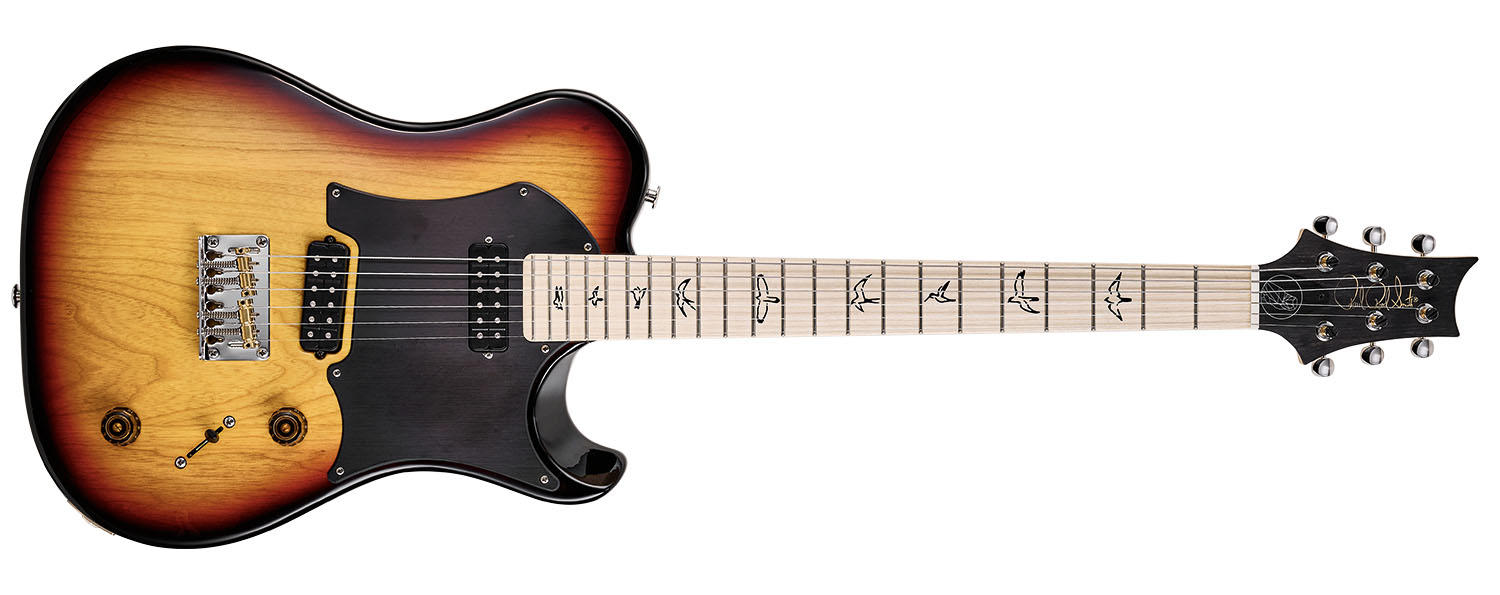
- PRICE: $2,899 / £3,099 (inc gigbag)
- ORIGIN: USA
- TYPE: Single-cut solidbody electric
- BODY: Swamp ash
- NECK: Maple, Myles Kennedy profile, bolt-on
- SCALE LENGTH: 648mm (25.5”)
- NUT/WIDTH: Bone/42mm
- FINGERBOARD: Maple, black outline bird inlays, 254mm (10”) radius
- FRETS: 22, medium
- HARDWARE: PRS plate-style steel bridge with 2x intonated brass saddles, PRS-designed vintage-style locking tuners – nickel-plated
- STRING SPACING, BRIDGE: 54.5mm
- ELECTRICS: 2x PRS Narrowfield MK humbuckers, 5-way lever pickup selector switch, master volume, master tone (with pull-switch to activate preset tone roll-off for bridge pickup)
- WEIGHT (kg/lb): 2.81/6.2
- OPTIONS: Colour only
- RANGE OPTIONS: See NF 53. The SSS John Mayer Silver Sky with either maple or rosewood fingerboard now lists at £2,849. The HSS Fiore lists at £2,829
- LEFT-HANDERS: No
- FINISHES: Tri-Color Sunburst (as reviewed), Antique White, Black, Hunters Green opaques, Vintage Natural – gloss NOC body; satin nitrocellulose neck
PRS NF 53
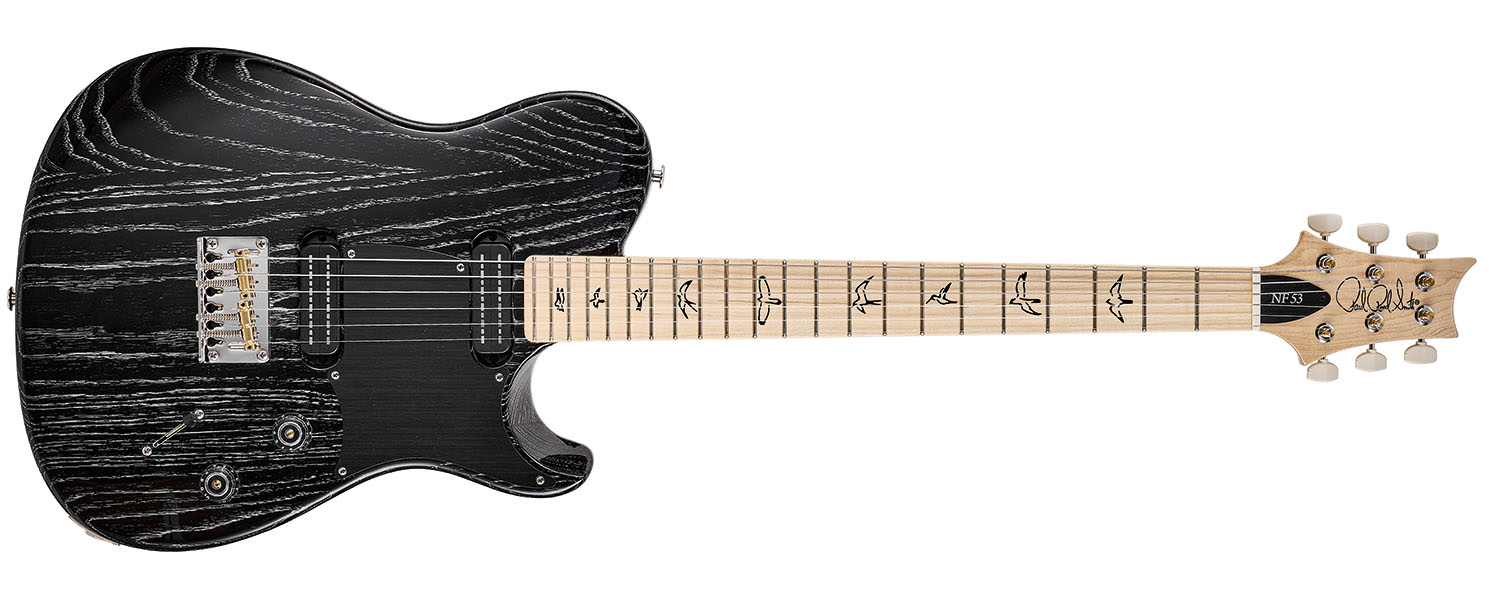
- PRICE: $2,899 / £3,099 (inc gigbag)
- ORIGIN: USA
- TYPE: Single-cut, offset solidbody electric
- BODY: Swamp ash
- NECK: Maple, Pattern 53 profile, bolt-on
- SCALE LENGTH: 648mm (25.5”)
- NUT/WIDTH: Bone/41.9mm
- FINGERBOARD: Maple, black outline bird inlays, 254mm (10”) radius
- FRETS: 22, medium
- HARDWARE: PRS plate-style steel bridge with 2x intonated brass saddles, PRS-designed vintage-style locking tuners – nickel-plated
- STRING SPACING, BRIDGE: 54.5mm
- ELECTRICS: 2x PRS Narrowfield DD humbuckers, 3-way lever pickup selector switch, master volume, master tone
- WEIGHT (kg/lb): 2.97/6.54
- OPTIONS: Colour only
- RANGE OPTIONS: See Myles Kennedy Signature
- LEFT-HANDERS: No
- FINISHES: Black Dog Hair (as reviewed), Blue Matteo, McCarty Tobacco Sunburst, White Dog Hair – gloss NOC body; gloss nitrocellulose neck
- CONTACT: PRS Guitars

Dave Burrluck is one of the world’s most experienced guitar journalists, who started writing back in the '80s for International Musician and Recording World, co-founded The Guitar Magazine and has been the Gear Reviews Editor of Guitarist magazine for the past two decades. Along the way, Dave has been the sole author of The PRS Guitar Book and The Player's Guide to Guitar Maintenance as well as contributing to numerous other books on the electric guitar. Dave is an active gigging and recording musician and still finds time to make, repair and mod guitars, not least for Guitarist’s The Mod Squad.
“It holds its own purely as a playable guitar. It’s really cool for the traveling musician – you can bring it on a flight and it fits beneath the seat”: Why Steve Stevens put his name to a foldable guitar
“Finely tuned instruments with effortless playability and one of the best vibratos there is”: PRS Standard 24 Satin and S2 Standard 24 Satin review
